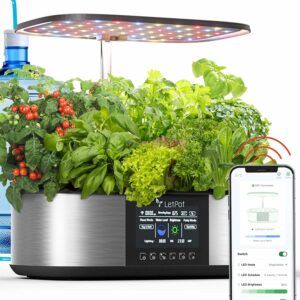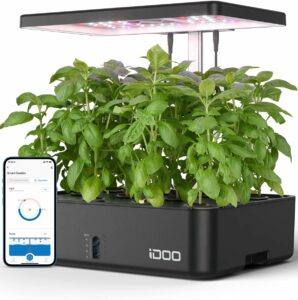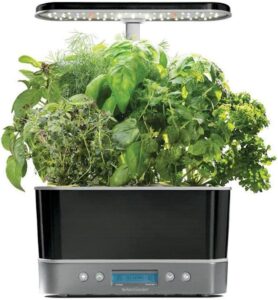Efficiency and Sustainability: Discovering the Best Hydroponic Systems
Introduction
In agriculture, efficiency and sustainability are two crucial factors determining the success and impact of farming practices.
Traditional soil-based farming faces challenges such as land scarcity, water scarcity, and environmental degradation, so alternative methods like hydroponics have gained significant attention.
Hydroponic systems offer a solution by maximizing efficiency and promoting sustainable agriculture.
This article aims to delve into hydroponics, exploring the best systems that prioritize efficiency and sustainability.
Provo Green Products embodies a beacon of trust in the realm of sustainable discoveries, offering choices that enhance your life and leave a positive mark on our planet.
Leveraging extensive expertise in manufacturing, construction, and various trades, we provide a solid foundation for sustainable living.
Our meticulous research process guarantees that our information about each product is precise and current, allowing you to make informed decisions.
Whether your interest lies in solar products, electric bikes, or other eco-friendly alternatives, our commitment to credibility ensures you have access to dependable insights, guiding your journey toward a more sustainable lifestyle.
Provo Green Products is your go-to destination for finding the right green products for your lifestyle.
Disclosure: As an Amazon Associate I earn from qualifying purchases. This does not affect the product pricing whatsoever.
Understanding Hydroponics
Hydroponics is a method of growing plants without soil, instead utilizing a nutrient-rich water solution that provides essential elements to plant roots.
Hydroponics directly supplying the necessary nutrients and water to the roots eliminates the need for soil and enables plants to grow faster and produce higher yields.
Additionally, this approach optimizes resource utilization, making it a sustainable choice for agriculture.
Factors to Consider in Hydroponic System Selection
When choosing a hydroponic system, several factors need to be considered to ensure efficiency and sustainability:
Space requirements and scalability:
- Different hydroponic systems have varying space requirements. Factors such as available area and desired crop yield should be considered. Additionally, scalability is vital, as the system should have the potential for expansion if needed.
Water and nutrient management:
- Efficient water usage and nutrient management are pivotal in sustainable hydroponics. Systems that enable precise water and nutrient delivery control and effective recycling or reuse help minimize waste and optimize resource utilization.
Energy consumption and optimization:
- Hydroponic systems require energy to power lighting, pumps, and other equipment. Choosing systems with energy-efficient components and incorporating renewable energy sources can significantly reduce environmental impact and operational costs.
Environmental impact and sustainability:
- Evaluating the environmental impact of hydroponic systems is essential. Water usage, nutrient runoff, and waste management should be considered.
Opting for systems that promote sustainability, such as using organic nutrients and implementing water-saving techniques, can contribute to a greener and more eco-friendly approach.
Exploring Different Hydroponic Systems
Now let’s examine some of the best hydroponic systems that prioritize efficiency and sustainability:
Nutrient Film Technique (NFT) Systems
The Nutrient Film Technique (NFT) system involves a shallow nutrient solution flowing over the plant roots, creating a thin film.
This continuous flow of nutrient-rich water gives plants constant access to essential elements.
NFT systems are known for their efficiency in water usage, as the solution is recirculated, reducing wastage.
They are suitable for growing leafy greens and herbs and can be easily scaled up.
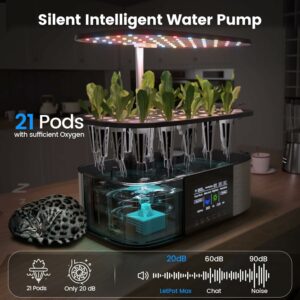
Deep Water Culture (DWC) Systems
Deep Water Culture (DWC) systems immerse plant roots in a nutrient-rich water solution.
The roots are suspended in the water, allowing for maximum oxygen absorption.
DWC systems are highly efficient regarding water usage since they require minimal water replenishment.
They are popular for growing larger plants such as tomatoes and peppers.
However, carefully monitoring nutrient levels and pH is crucial to maintain optimal plant health.
Aeroponics Systems
Aeroponics systems suspend plant roots in the air and mist them with a nutrient solution.
The fine mist gives roots optimal oxygenation while delivering nutrients directly to the root zone.
Aeroponics is known for its excellent water efficiency, as it uses minimal water compared to other systems.
This method promotes rapid plant growth and is ideal for cultivating delicate plants like lettuce and strawberries.
Drip Irrigation Systems
Drip irrigation systems in hydroponics involve delivering a precise amount of nutrient solution directly to the plant roots through a network of drip emitters.
This controlled delivery minimizes water wastage and ensures targeted nourishment.
Drip irrigation systems are versatile, suitable for various crops, and allow for easy customization.
They are also compatible with automation, enabling precise control and reducing labor requirements.
Ebb and Flow (Flood and Drain) Systems
Ebb and Flow systems intermittently flood the root zone with a nutrient solution and drain it back into a reservoir.
This cyclic process provides plants with periodic access to nutrients and oxygen.
Ebb and Flow systems are adaptable, making them suitable for various plants.
They are known for their ease of use and scalability. However, attention must be paid to proper drainage to prevent waterlogging and root rot.
Hybrid Systems
Hybrid hydroponic systems combine different techniques to leverage the advantages of multiple systems.
For example, incorporating NFT, DWC, and drip irrigation in a single system allows for efficient water usage, nutrient delivery, and flexibility in crop selection.
Hybrid systems offer the opportunity to maximize efficiency and customize the system to specific needs.
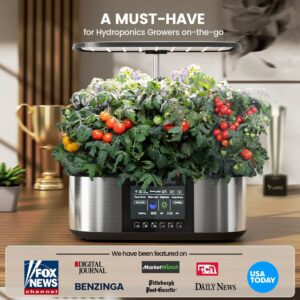
Conclusion
Efficiency and sustainability are paramount in the world of hydroponics.
Growers can choose the best hydroponic system by carefully considering space requirements, water and nutrient management, energy consumption, and environmental impact.
Nutrient Film Technique (NFT), Deep Water Culture (DWC), Aeroponics, Drip Irrigation, and Ebb and Flow systems have unique advantages, catering to different plants and cultivation goals.
Moreover, hybrid systems allow for combining techniques and optimizing resource utilization.
By embracing hydroponics and selecting the most efficient and sustainable system, growers can cultivate healthy, high-yielding crops while minimizing their environmental footprint and contributing to a greener future in agriculture.
Stay in Touch!
I’am a dedicated entrepreneur with many years of experience and an integrity-driven individual who is highly motivated to succeed. Leveraging extensive expertise in manufacturing, construction, and various trades, we can provide a solid foundation for sustainable living. Our meticulous research process guarantees that our information about each product is precise and current, allowing you to make informed decisions. A deep understanding of business operations empowers me to consistently implement improvements that result in ongoing success. Visit site.

